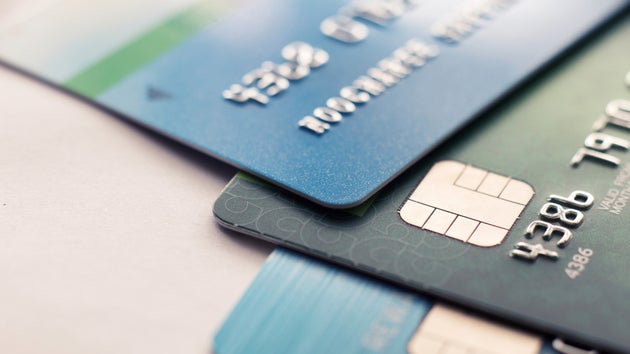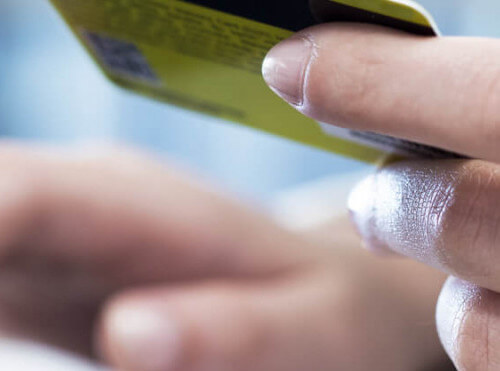Table of Contents
Online wallet definition
A digital wallet, or e-wallet, is a payment system that securely stores users' payment information and passwords to be used as payment methods. Using a digital wallet facilitates and accelerate the checkout process. A digital wallet can also be used to store loyalty card information and digital coupons.
Advantages of online wallets
The checkout process is the biggest advantage of payment per e-wallet. It offers a high conversion rate, as it is a very pleasant and uncomplicated for customers.
The transfer of the payment to the retailer after payment is processed immediately. A further advantage for the retailer. The order can then be processed quickly and sent out immediately.
In addition to this, e-wallets are optimal for subscription and installment payments, because these can be processed quickly and easily.
An advantage for the customer is that they do not have to give any financial data to the retailer upon payment. Bank and credit card data are entered once and stored in the e-wallet account. When the customer pays at an online checkout later, the required verification includes only his email address and password for his e-wallet account.
Find the right e-wallet payment system for your target region
There are different providers for e-wallets and often, providers are only available in certain countries or regions. Therefore, it’s important to be well informed on which e-wallets are available and popular in your shop’s target region or country, so that you optimize the experience for your customers' chosen method of payment. For example, the provider Qiwi is only available in Russia, and the chosen e-wallets of China include Alipay and We Chat Pay.
Disadvantages of e-wallets
Payment per e-wallet has many advantages, but there are also some disadvantages to be considered. Firstly, the online retailer must also open an account with the e-wallet provider they would like to offer to their customers as a payment method. That means that that the online retailer must take the time to create an account and maintain it.
A further disadvantage is that the usage of an e-wallet provider can be expensive compared to other payment methods. Therefore, you should take the time to consider how sensible this option is for your shop.
Mobile digital wallet platforms
Mobile e-wallets allow pay at mobile payment terminals, using device with enabled near-field communications (NFC) technology. While smartphones are the most commonly used devices for mobile contactless payment, compatible devices also include tablets and wearables, like smartwatches. The two major digital wallet platforms are Google Pay and Apple Pay. Other platforms include Fitbit Pay and Samsung Pay.
Google Pay (formerly Android Pay)
Since January 2018, Android Pay and Google Wallet have been unified into a single payment system, Google Pay. The rebranded service’s new API allows merchants to add the payment service to websites, apps, Stripe, Braintree, and Google Assistant.
Compatible Android devices, with Android KitKat 4.4 or more recent, can communicate wirelessly with point-of-sale terminals using a NFC antenna, host-based card emulation (HCE) and Android’s security. To add a new payment card to their wallet, customers can either enter the information manually in the Google Pay app, or simply take a photo of the card.
When paying, a virtual account number, or token, is generated, along with a one-time security code, instead of sharing the customer’s payment information. Two-factor authentication grants this contactless payment method an additional layer of security. Physical authentications, such as fingerprint ID can be used to activate Google Pay.
The service is currently available in 21 countries (as of 27/09/18) around the globe. It was first introduced in the United States in 2015. Google expects to be able to make their service available in France and South Korea in 2018.
Currently, customers can add cards of all major cards companies (Visa, MasterCard, Amex, Discover, Diners Club, JCB, Maestro) to their account. Further partnerships allow users to include their PayPal (in the USA), EFTPOS (in Australia), Interac (in Canada), nanaco and Edy (in Japan) payment information to their Google Pay wallet.
Apple Pay
Apple’s mobile payment and digital wallet service was launched in September 2014. It is compatible with the iPhone (6 or more recent), iPad (Air 2 or Pro) and the Apple Watch. Alternatively, iPhone, 5, 5C and 5S can use Apple Pay through an Apple Watch, although it is not compatible with Touch ID security.
When paying, a device-specific number, or token, and unique transaction code are used in-lieu of the actual card information. Authentication can be made via PIN, or with Touch ID or Face ID, depending on the biometrics readers on the device used. Apple users can also pay online purchases made in iOS apps and Safari with Apple Pay, whether they are browsing on their iPhone, iPad or Mac. Security is reinforced through two-factor authentication and a dedicated chip that stores encrypted payment information, the Secure Element.
While merchants can choose to buy an Apple Pay-specific terminal, the service can work with existing contactless terminals.
Apple Pay services are currently available in 30 countries (as of 27/09/18). The service will be made available in Norway, Poland and Ukraine in 2018.
Apple Pay works with most credit and debit cards (Amex, Visa, MasterCard, UnionPay, etc.). Cards previously on file with iTunes are automatically added to the users’ wallets. New cards can be added either by manually entering the information in the app, or by taking a picture of the cards.
Are e-wallets the future of online payment?
The future of e-wallets is still to be determined. Will other e-wallets gain as much popularity as Paypal? Currently, Paypal dominates the e-wallet market. However, many different brands of e-wallets are gaining steam - they are used to pay for many things, from online subscriptions to newspapers to eBay orders - especially small amounts.
Currently, small transaction sums display the strength of the e-wallet, as paying with credit card is often not economical when making a small payment. E-wallets are incredibly secure and offer a minimized risk of fraudulent activity compared to credit cards as well. As the wallet is already loaded with money, it is no longer necessary to give out bank or card information when purchasing products. The amount that can be stolen from the user is limited to the amount of money that is in their e-wallet at the moment the account is compromised.
Digital wallet providers
Would you like to offer your customers the possibility to pay by e-wallet in your online shop? There are a few things to look out for when choosing a payment service provider. Most importantly, you should choose a PSP that is optimal for the countries you wish to sell to. Of course, it’s never a bad idea to choose a provider like Paypal that gives you a global coverage, however, businesses who engage in cross-border e-commerce should most definitely learn about local and regional e-wallet providers. In the gaming and gambling markets, Skrill, Neteller and Payza are also popular.










